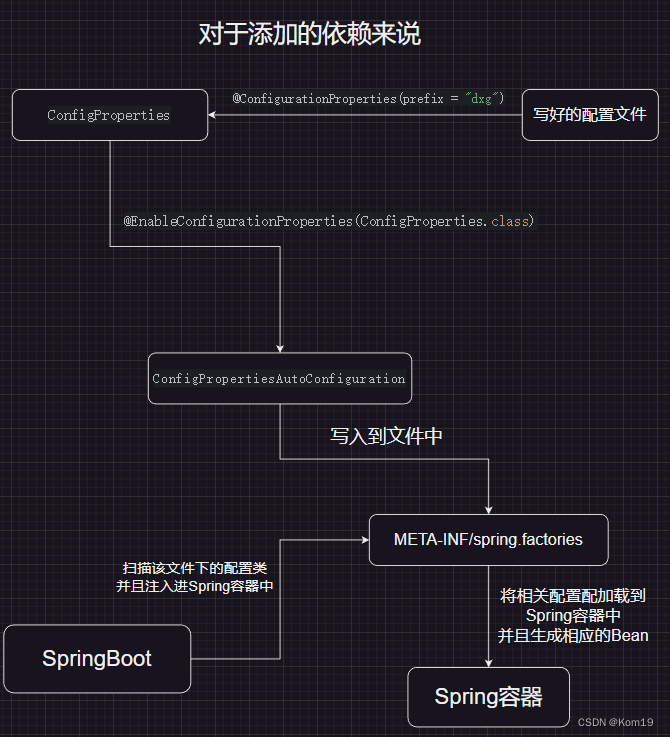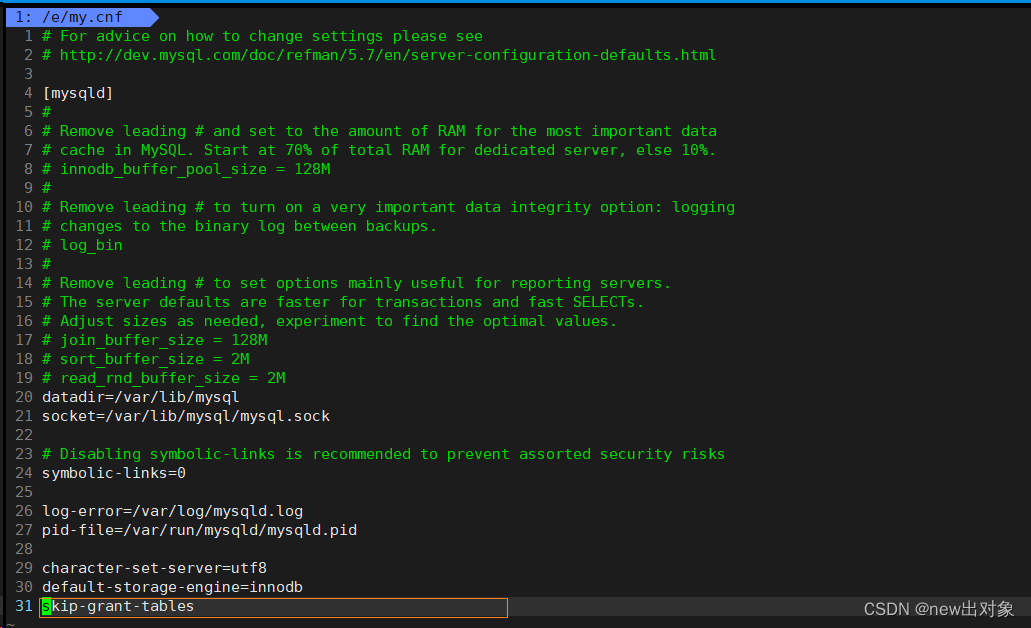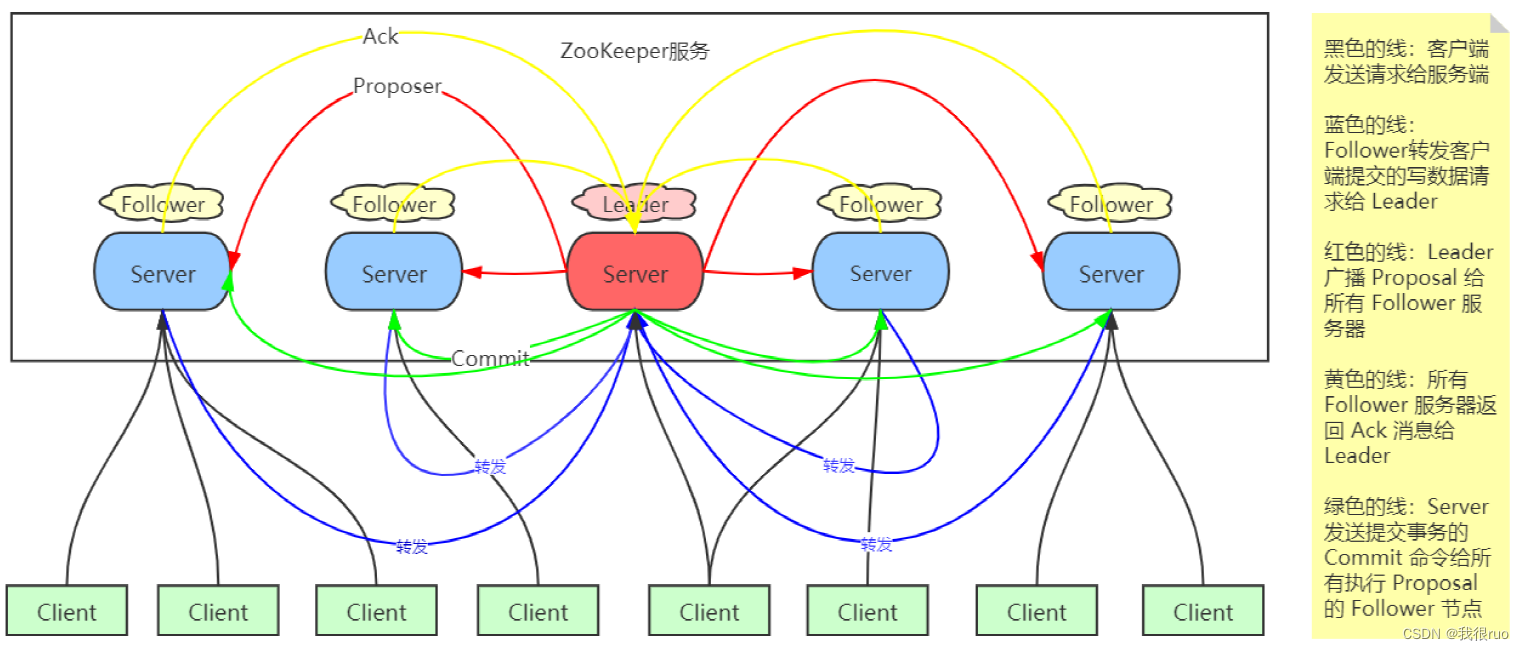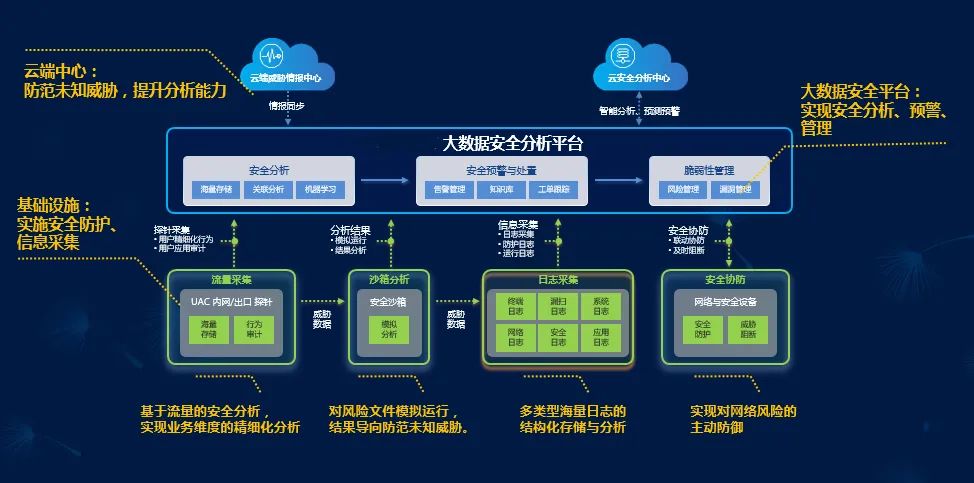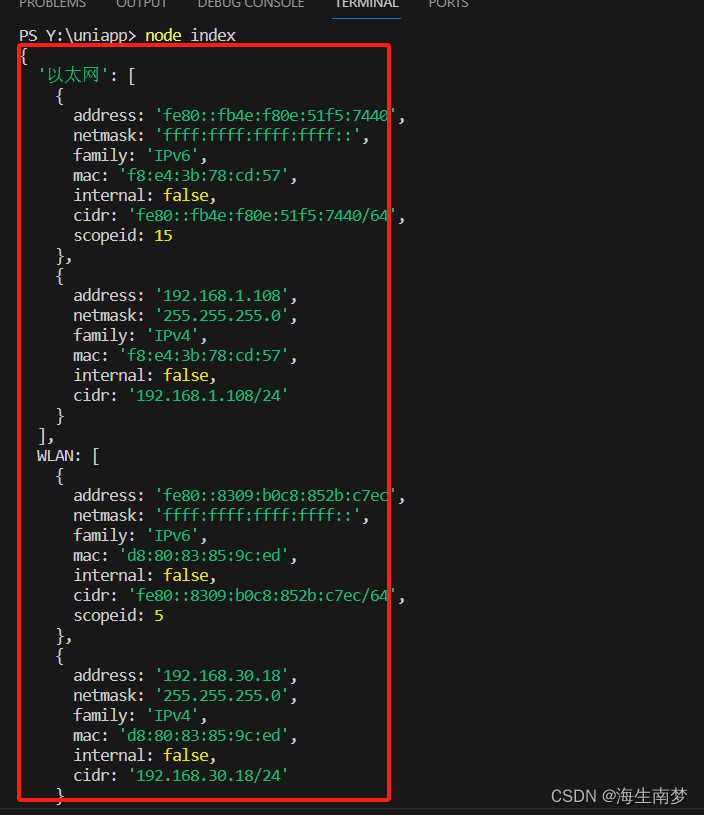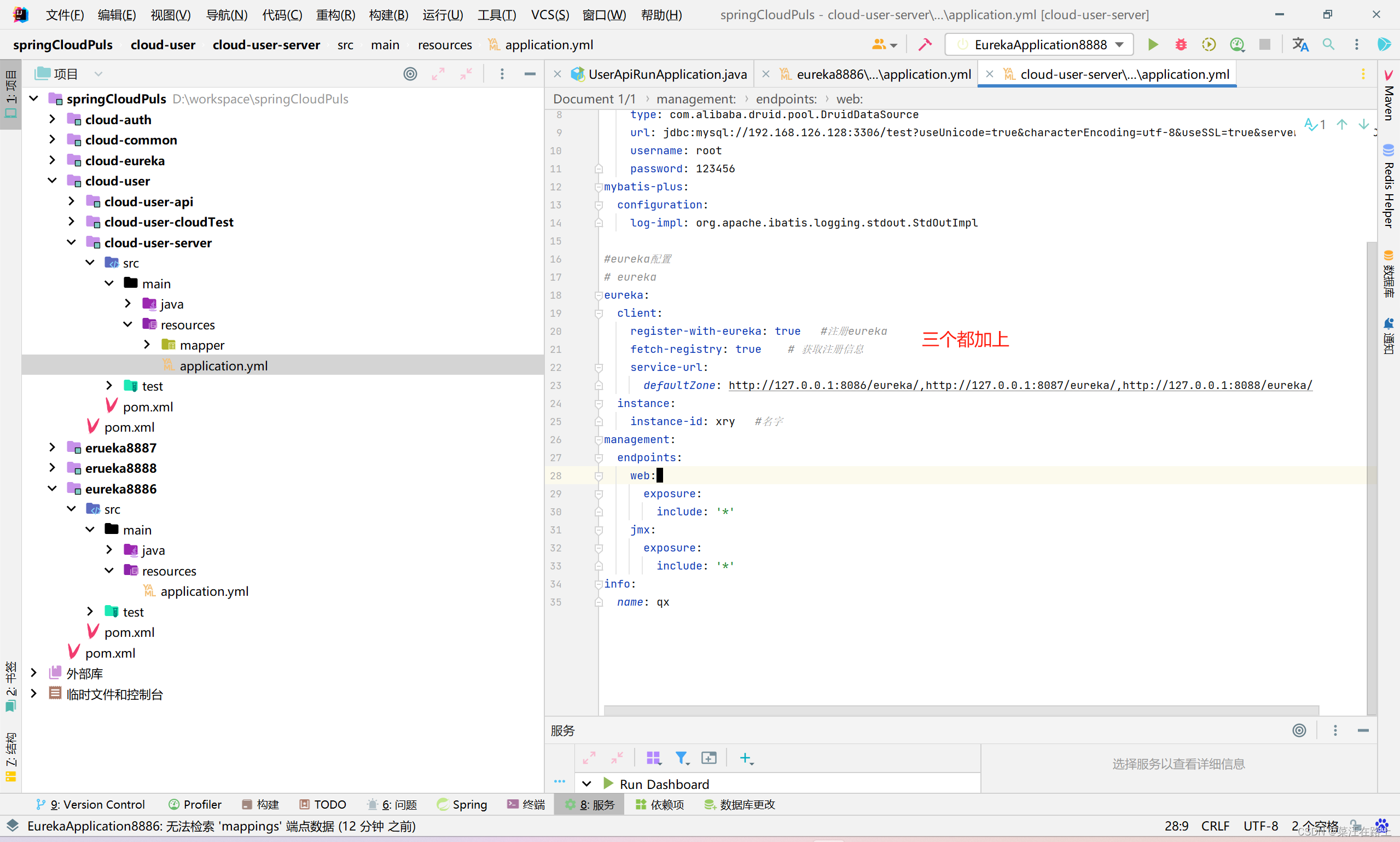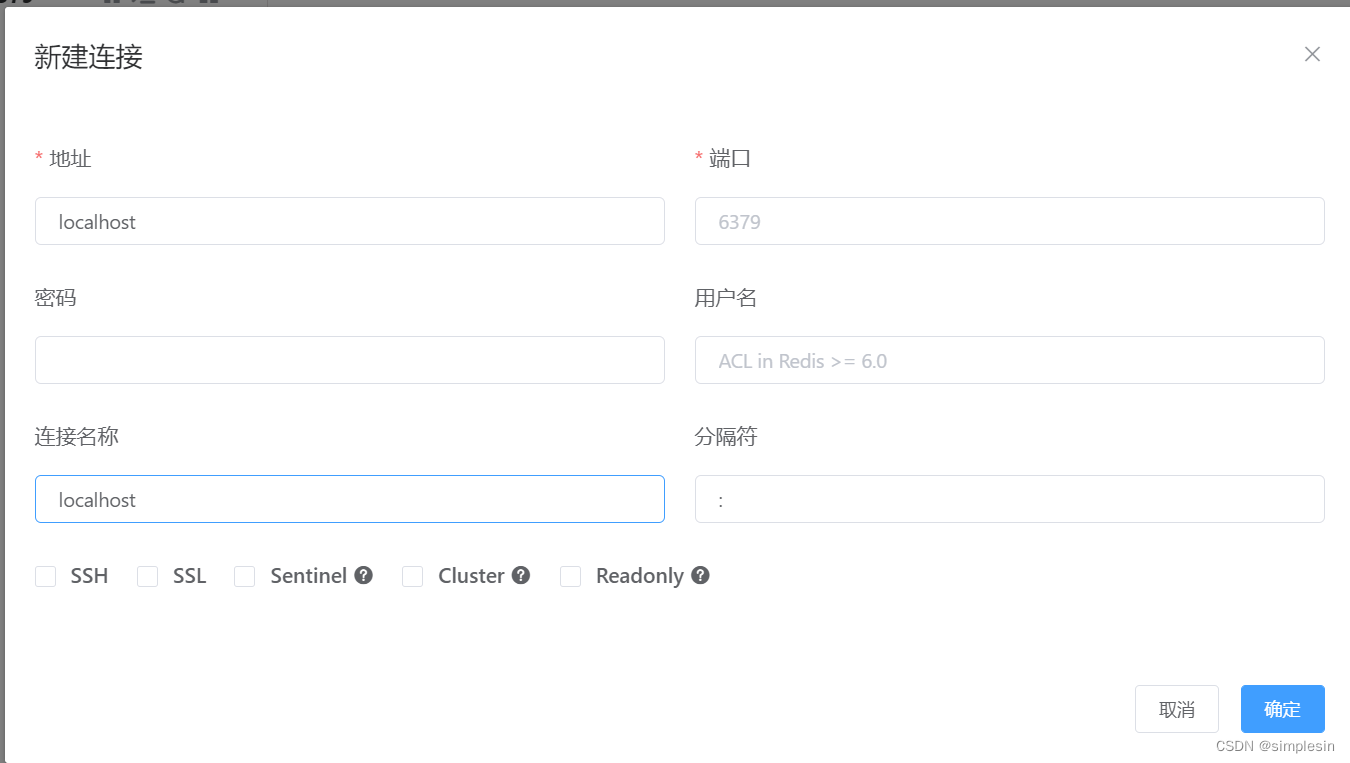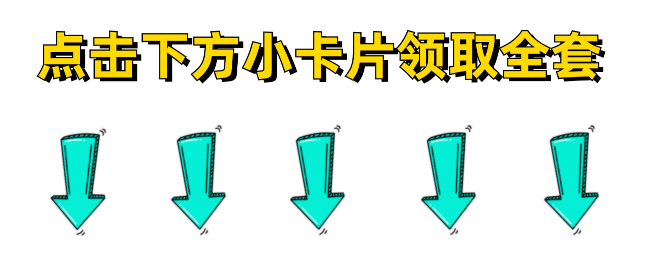自动装配以及简单的解析源码
自动装配是指SpringBoot在启动的时候会自动的将系统中所需要的依赖注入进Spring容器中
我们可以点开@SpringBootApplication这个注解来一探究竟
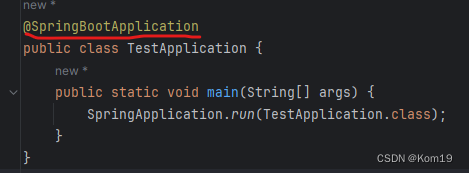
点开这个注解可以发现这些
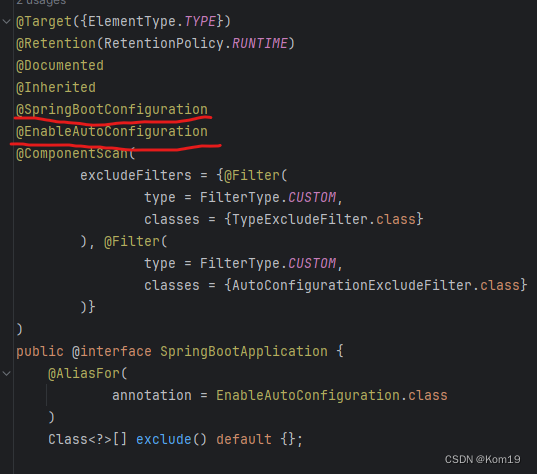
我们点开@SpringBootConfiguration这个注解
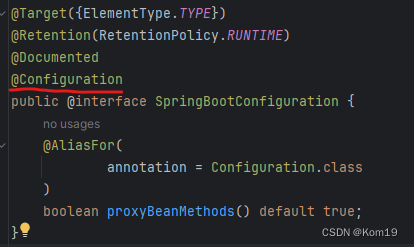
可以发现实际上@SpringBootApplication这个其实是一个配置类
再点开@EnableAutoConfiguration(允许自动配置)这个注解,
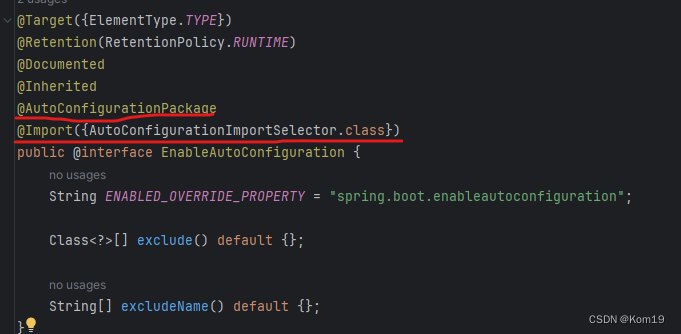
在这里最重要的是@AutoConfigurationPackage和@Import这两个注解
@AutoConfigurationPackage这个注解的作用是扫描与启动类同目录底下的所有包以及其子包,将相关的Bean注入进Spring容器中
而@Import注解则是将AutoConfigurationImportSelector.class将这个类作为Bean注入进Spring容器中,我们再点开这个类来看看

找到这个方法,然后再点 loadFactoryNames这个方法
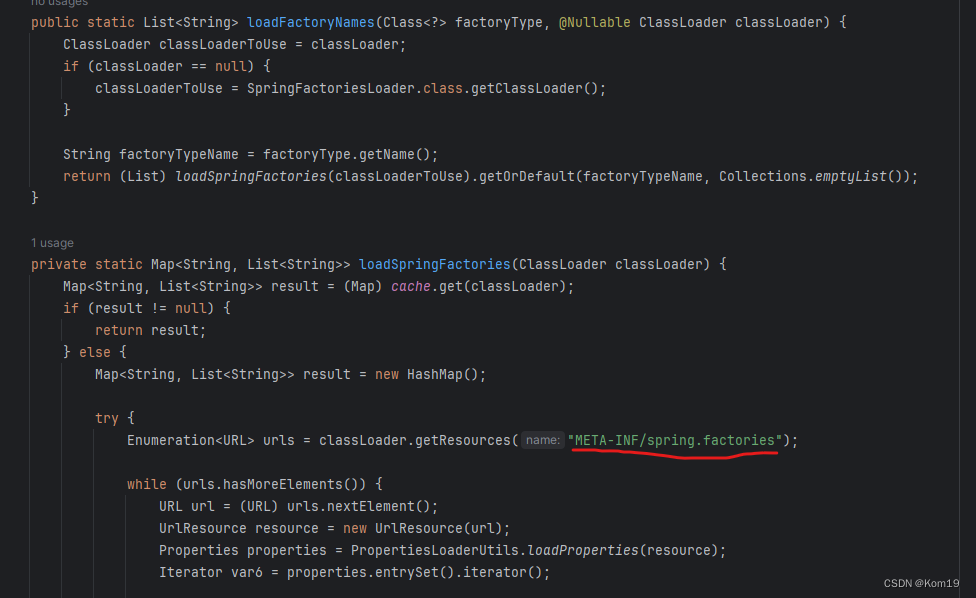
我们可以看到这段代码,这段代码的意思就是说,加载META-INF/spring.factories 这个目录底下的配置类到Spring容器里面,再根据配置类来生成相应的Bean对象
所以说这两个注解,一个是将同一个项目里面的bean注入进Spring容器中,另外一个注解是将别人写好的配置类里面的Bean注入进Spring容器中
手写一个starter帮助理解自动装配
手把手教学
首先创建一个maven工程,名字应该是xxx-spring-boot-starter(Spring官方规定,如果是第三方的starter命名规则应该是xxx-spring-boot-starter,而Spring官方的starter应该是spring-boot-xxx-starter)
创建好了以后添加如下依赖
<parent>
<groupId>org.springframework.boot</groupId>
<artifactId>spring-boot-starter-parent</artifactId>
<version>2.4.2</version>
</parent>
<dependencies>
<dependency>
<groupId>org.springframework.boot</groupId>
<artifactId>spring-boot-starter</artifactId>
</dependency>
<dependency>
<groupId>org.springframework.boot</groupId>
<artifactId>spring-boot-autoconfigure</artifactId>
</dependency>
</dependencies>
然后我们创建两个类
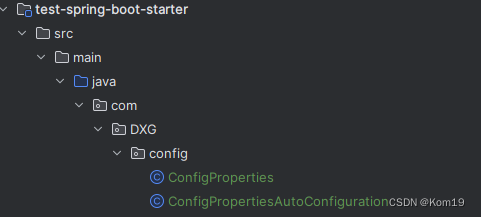
ConfigProperties 这个类是与Spring的配置文件关联的,配置文件中的值会被注入相应的字段中
@ConfigurationProperties(prefix = "dxg")这个注解的意思就是,在配置文件中相关配置前缀是什么
package com.DXG.config;
import org.springframework.boot.context.properties.ConfigurationProperties;
@ConfigurationProperties(prefix = "dxg")
public class ConfigProperties {
private Integer age;
private String name;
public ConfigProperties(){
}
public ConfigProperties(Integer age, String name) {
this.age = age;
this.name = name;
}
public Integer getAge() {
return age;
}
public void setAge(Integer age) {
this.age = age;
}
public String getName() {
return name;
}
public void setName(String name) {
this.name = name;
}
}
然后我们再编写这个配置类
@Configuration
@EnableConfigurationProperties(ConfigProperties.class)
public class ConfigPropertiesAutoConfiguration {
public ConfigProperties configProperties;
public ConfigPropertiesAutoConfiguration(ConfigProperties configProperties){
this.configProperties = configProperties;
}
}
在这个配置类中,首先打上@Configuration这个注解表明这是一个配置类
然后再打上@EnableConfigurationProperties(ConfigProperties.class)这个注解,这个注解的意思是让使用了@ConfigurationProperties(prefix = "dxg")的ConfigProperties.class注入进IOC容器中
然后我们就可以根据配置来生成相应的Bean了,比如我们编写了两个Bean
@Bean
public TestService testService(){
return new TestService(configProperties.getAge(), configProperties.getName());
}
@Bean
public TestService1 testService1(){
return new TestService1(configProperties.getAge());
}
package com.DXG.service;
public class TestService {
private Integer age;
private String name;
public TestService(Integer age, String name) {
this.age = age;
this.name = name;
}
@Override
public String toString() {
return "ConfigProperties{" +
"age=" + age +
", name='" + name + '\'' +
'}';
}
}
package com.DXG.service;
public class TestService1 {
private Integer age;
public TestService1(Integer age) {
this.age = age;
}
@Override
public String toString() {
return "TestService1{" +
"age=" + age +
'}';
}
}
最重要的一步来了,我们需要在META-INF这个目录下面创建spring.factories这个文件

在这里面输入我们的配置类,这样才能被SpringBoot扫描到然后加载进Spring容器里面生成相应的Bean
org.springframework.boot.autoconfigure.EnableAutoConfiguration=\
com.DXG.config.ConfigPropertiesAutoConfiguration
然后我们打包这个项目,生成相应的jar包
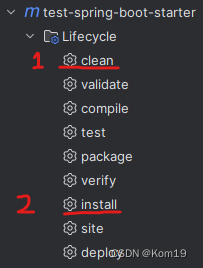
接下来我们就需要测试自动装配到底有没有生效了
在创建一个项目然后引入这个jar包
<parent>
<groupId>org.springframework.boot</groupId>
<artifactId>spring-boot-starter-parent</artifactId>
<version>2.4.2</version>
</parent>
<dependencies>
<dependency>
<groupId>org.springframework.boot</groupId>
<artifactId>spring-boot-starter-web</artifactId>
</dependency>
<dependency>
<groupId>com.DXG</groupId>
<artifactId>test-spring-boot-starter</artifactId>
<version>1.0-SNAPSHOT</version>
</dependency>
</dependencies>
编写相应的代码来进行测试
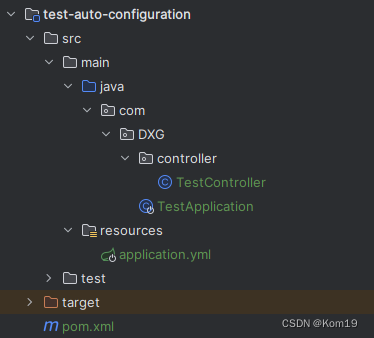
package com.DXG.controller;
import com.DXG.service.TestService;
import com.DXG.service.TestService1;
import org.springframework.web.bind.annotation.RequestMapping;
import org.springframework.web.bind.annotation.RestController;
import javax.annotation.Resource;
@RestController
@RequestMapping("/test/")
public class TestController {
@Resource
private TestService testService;
@Resource
private TestService1 testService1;
@RequestMapping("/testString")
public String testString(){
return testService.toString();
}
@RequestMapping("/testString1")
public String testString1(){
return testService1.toString();
}
}
在配置文件里面填写相应的配置
server:
port: 8080
dxg:
age: 12
name: "DXG"
接下来启动SpringBoot项目
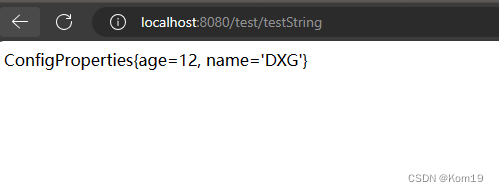

可以看到,确实是将两个Bean都注入进Spring容器中供我们使用了
总结
接下来画个流程图总结一下
